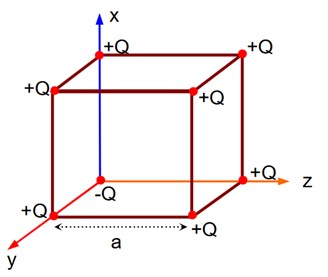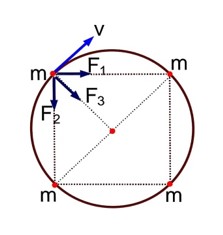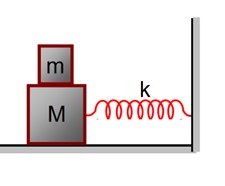Physics
Get insights from 5.6k questions on Physics, answered by students, alumni, and experts. You may also ask and answer any question you like about Physics
Follow Ask QuestionQuestions
Discussions
Active Users
Followers
New answer posted
2 months agoContributor-Level 10
If charge (-Q) at origin is replaced by (+Q), then electric field at the centre of the cube is zero. Thus, electric field at the centre of the cube is as if only (-2Q) charge is present at the origin.
New answer posted
2 months agoContributor-Level 10
Velocity of block in equilibrium, in first case,
Velocity of block in equilibrium, is second case,
From conservation of momentum,
Mv = (M + m) v'
New answer posted
2 months agoContributor-Level 10
Since, should be dimensionless.
So, dimension of
Dimension of
So,
New answer posted
2 months agoContributor-Level 9
by conservation of mechanical energy
K.Ei + P.Ei = K.Ef + P.Ef



k = 600 N/m1
New answer posted
2 months agoContributor-Level 10
A : Series limit of Lyman series
B : Third line of Balmer series
C : Second line of Paschen series
New answer posted
2 months agoContributor-Level 10
When connected in series, equivalent capacitance,
When connected in parallel, equivalent capacitance
C2 = C + C = 2C
Taking an Exam? Selecting a College?
Get authentic answers from experts, students and alumni that you won't find anywhere else
Sign Up on ShikshaOn Shiksha, get access to
- 65k Colleges
- 1.2k Exams
- 679k Reviews
- 1800k Answers




